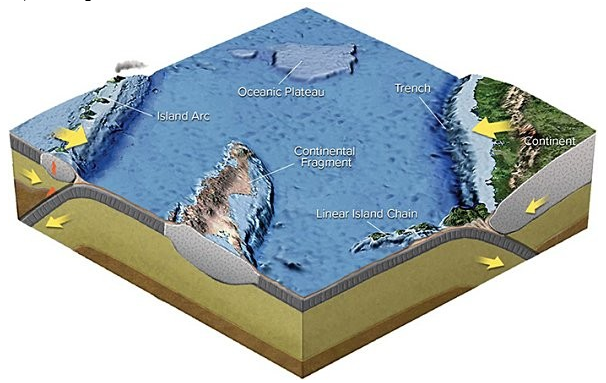Briefly describe the three primary stages of a tornado life cycle
A variety of factors must come together in order to produce a tornado. Once this happens, tornadoes usually progress through a series of stages. The first stage is the dust-whirl stage, where dust swirling upward from surface marks the tornado's circulation on the ground and a short funnel cloud often extends downward from the thunderstorm's base. Damage during this stage is normally light. The second stage is the mature stage, when the tornado's strength increases. This is the stage when damage is normally most severe as the funnel reaches its greatest width and is almost vertical. The final stage is the decay stage, where the tornado is typically stretched into the shape of a rope, usually becoming greatly distorted before it finally dissipates.
You might also like to view...
In the figure below, a tectonic terrane is shown at

A) island arc.
B) ocean plateau.
C) continental fragment.
D) linear island chain.
E) All of these are correct.
A cliff along the coast line may be the result of which of the following processes:
a. uplit and erosion resulting in wave cut platforms b. long shore transport resulting in barrier islands c. denuded coral reefs d. ice push
A greenhouse is an imperfect analogy for how the Earth's atmosphere behaves because longwave radiation is not trapped in the same way it is in a greenhouse
Indicate whether the statement is true or false
Effects of centuries of European overseas expansion on agriculture include all of the following EXCEPT
A) commercial agricultural systems have become a feature of much of the world. B) hunting and gathering has virtually disappeared. C) few completely self-sufficient farms exist. D) subsistence farming has been completely eradicated. E) All of the above are effects.